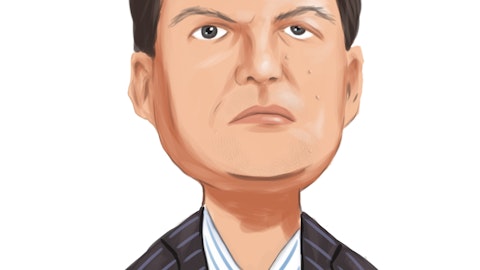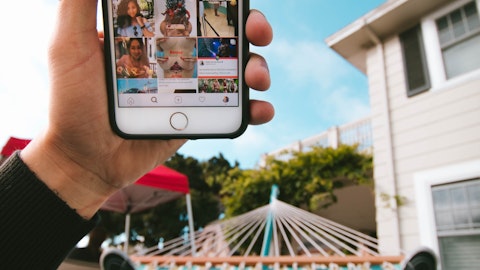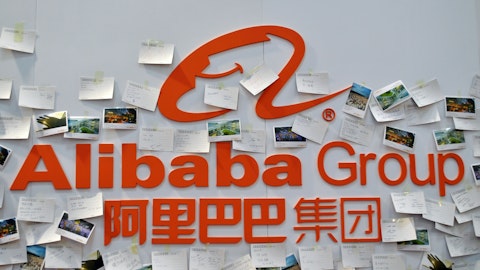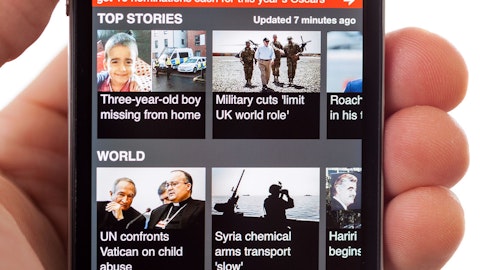Perry Sook: Jim, I will endeavor to cover that. If I miss something, let me know. As it relates to the repeat factor, we do repeat our primetime talk an opinion shows overnight, they actually do pretty well on the West Coast were watching those in primetime in real time. And so the cume of that audience is something that’s useful for sales. The only other thing we repeat is on Sunday nights and Saturday nights, when we’re in live news and early prime on the East Coast, we repeat that broadcast basically for the West Coast, immediately thereafter. But the rest of the programming is all original. And as we expand we see really no difference – no different pattern as to what we plan to do there. And we will be 24/7 with news programming here literally ahead of schedule in 2024 and earlier in the year than we had originally anticipated.
As it relates to the demo, the audience for cable news, the audience for television in general, SKUs generally older, linear television and we’re no exception to that. The primary pocket of audience that we’re focused on is the 35 to 64 demographics slightly older than 25, 54. We’re trying to bring advertisers along to that. We also think the two-plus audience is of value to some advertisers and we report that number as well. As it relates to the skewing of the audience to the electric. We have said, since the founding of this that, we thought the biggest swim lane in America were those people that were not on the lunatic left or the lunatic right, which is about 60% of America that we can agree on more than we disagree on. And our job is just building awareness.
We started the network with a pretty substantial pre-launch publicity campaign. We launched with a 10% or 11% awareness of NewsNation. That awareness is now up to a number in the mid-30s, but that still means that, roughly, 60% of the country we still need to introduce ourselves to the viewer. Distribution is not the issue, it is because we now are — we are fully distributed and have a larger distribution base than MSNBC, again, for a network that is less than four years old in its current form. So it’s all about building awareness for our product and getting people to change their habits and come to us. And we see these green shoots of, nights where we are, competitive with and, in fact, beat our more established competitors. We just need more of those and it’s a process.
I’m very pleased with the progress we’ve made. We’re ahead of schedule on where I thought we would be in pivoting this network to news from general entertainment. Thank God that we did because, that is, what people are interested in watching and not so much the general entertainment networks that, as in basic cable are in free fall. So from our perspective, it was an opportunistic pivot made at absolutely the right time. And like I said, we’re ahead of schedule in terms of all the growth metrics that I look at, but it is a — this is a long-term build and long-term value creation play that we are financing organically, with the program expense, underwriting the journalism expense as we continue to complete this pivot.
Jim Goss: Great. Thanks very much. Great comments. I think we’ll leave it at that.
Operator: And the next question comes from the line of Barton Crockett with Rosenblatt Securities. Please proceed with your question.
Barton Crockett: Hi. Thanks for taking the question. I was curious about the competitive dynamics in the ad market. So you flagged some pressures, particularly in national and the bigger cities. We’re all aware that there’s a lot of new inventory that’s coming in on some of the streaming services, taking ads, Netflix and Amazon Prime taking ads and, some of the fast services still growing. Is that a competitive — is that a meaningful factor in the ad market? Do you think that’s part of what’s weighing on the market at this point? So if you could comment on that I’d be interested. And then the second question is just there’s a lot of discussion about some of the big entertainment conglomerates perhaps restructuring. There was a flurry of activity before about Disney and ABC.
Now there’s a floor you have talk around Paramount maybe potentially FOX potentially Comcast. In general, if there was a broadcast network for sale what’s your level of interest? What’s the potential for you guys to be able to make something like that work if it were to become available? Thank you.
Perry Sook: I’ll speak to the last question first, and then let Mike speak more to advertising. But I would just say we buy things and we build things. If you look at the company, the stations drive our network that we own today and distribution uses all of that to gain distribution as well as distribution revenue for the entire portfolio. It’s kind of like one building block on another. In theory, we could own a big four broadcast network in addition to the CW. I think we would say, never say never, but it would have to be like everything else we’ve ever bought an actionable transaction at a value that would make sense for us. So I think I would just leave it go at that, but we would not have an allergic reaction to having that discussion.
But again, it would have to be the same kind of opportunistic acquisition that we have made in the 27-year history of the company. And the new entrants into the ad market are have tiny audiences at this point. And so they’re not really a factor. I would just say that we’re in some phase of a recession here. And whether we have a soft landing a hard landing a hockey stick recovery or whatever and advertising is generally a leading economic indicator and that is weighing more heavily on the market than any of these new entrants from my perspective. Michael, do you want to add some color?
Mike Biard: Yes. I would add on the advertising point that I think our portfolio both in terms of where we focus our advertising and the lion’s share of our advertising is local not national. And I think our sales force, which covers the country generally gives us a distinct competitive advantage versus the platforms that you mentioned. Also with respect to our growing portfolio of sports both with respect to the local TV stations and our national networks live programming gives us another advantage relative to where we think those other platforms will focus their advertising efforts.
Barton Crockett: Okay. Thank you.
Mike Biard: Yes.
Operator: There are no further questions at this time. I would like to turn the floor back over to Mr. Sook for any closing comments.
Perry Sook: Thank you very much operator. Just to close out our business fundamentals our financial track record and our free cash flow generation continue to remain strong, and we’re confident that our capital allocation strategy will continue to drive industry-leading returns for our shareholders in 2024 and beyond. Thanks very much for joining us everyone. We look forward to speaking with you again in three months’ time when we report our first quarter 2024 results. Have a good day.
Operator: This concludes today’s teleconference. You may disconnect your lines at this time. Thank you for your participation.




